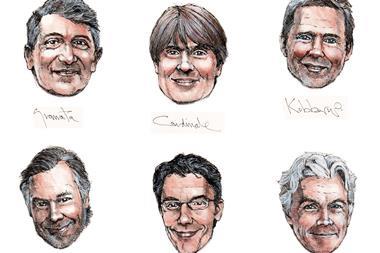Compenswiss, the public institution managing Switzerland’s first pillar social security funds AHV, IV and EO worth total assets of CHF38.56bn (€34.9bn), is considering investing in alternative asset classes as part of a periodic allocation review to improve returns, a spokesperson told IPE.
The institution is reviewing the possibility of investing in private equity, private debt and infrastructure, with “[risk] tolerance limits in terms of liquidity and time horizon”, the spokesperson added.
Compenswiss has for a long time invested in listed indirect real estate and for several years in private real estate, he said.
Asked about the amount of potential investments, or the priority given to a specific asset class, the spokesperson added that Compenwiss has not drafted “precise plans to invest” in alternatives yet.
Compenswiss has so far not invested in private equity, private debt or infrastructure, so it would be a first if plans were to go ahead. It invests 10.85% in real estate, mostly in Switzerland (59.98%) and North America (20.42%), according to an overview of its investments.
The largest share of allocations is in foreign currency bonds (32.84%), followed by equities (21.66%), Swiss franc-denominated bonds (10.12%), tactical investments (5.28%), loans (4.27%), commodities (2.04%), money market investments (1.32%) and liquidity (11.11%), according to the overview.
The fund for old aged pensioners and survivors. AHV, which houses the largest share of the assets at CHF33.43bn, returned 4.05%, or CHF1.3bn, in 2020.
“Equities were the biggest contributor for the good performance [at AHV] in 2020. We overweighted this asset class for much of the year, especially in the second half,” the spokesperson said.
Compenswiss also put in place a hedging programme that generated “a lot of liquidity” and contributed to the positive performance after the market downturn in March, he added.
EO, the fund providing compensation for loss of income to people in the military and civil services, and for maternity and paternity leave, recorded a return of 4.34% last year on CHF1.18bn of assets, while the disability insurance fund, IV, returned 4.29% on CHF3.94bn.
Mixed financial perspectives
The AHV fund ended 2020 with a positive income of CHF579m. The overall operating performance, including also returns on investments, stood at CHF1.94bn, not far from the CHF1.88bn forecast by the Federal Social Insurance Office (FSIO) in February.
Based on FSIO’s outlook, the AHV fund will likely see the ratio between income and expenses decrease to -CHF1.36bn in 2025 and -CHF6.05bn in 2031. Operating results for the fund will be expected drop to -CHF492m in 2025 and to -CHF5.57bn in 2031.
Returns on capital will go down to CHF 871m in 2025 and CHF573m in 2031.
According to FSIO, the ratio between income and expenses for the EO fund is expected to improve from CHF133m in 2020 to CHF158m in 2031; with operating results also expected to go up from CHF181m last year to CHF235m in 2031 and returns, too, from CHF50m in 2020 to CHF76m in 2031.
“The prospects for the EO can be described as solid [while] in the case of IV there are still a few difficult years ahead, which the pandemic could [contribute] to extend,” the spokesperson said.
The IV fund is expected to continue to record a negative income until 2023, according to FSIO, to improve to a positive CHF104m in 2025 and CHF893m in 2031.
Operating results for the fund are expected to be positive from 2024 at CHF55m, to climb to CHF1.03bn in 2031. Returns are expected to decrease sharply, instead, from CHF164m last year to CHF69m in 2025 and pick up again to reach CHF139m in 2031, FSIO said.










No comments yet